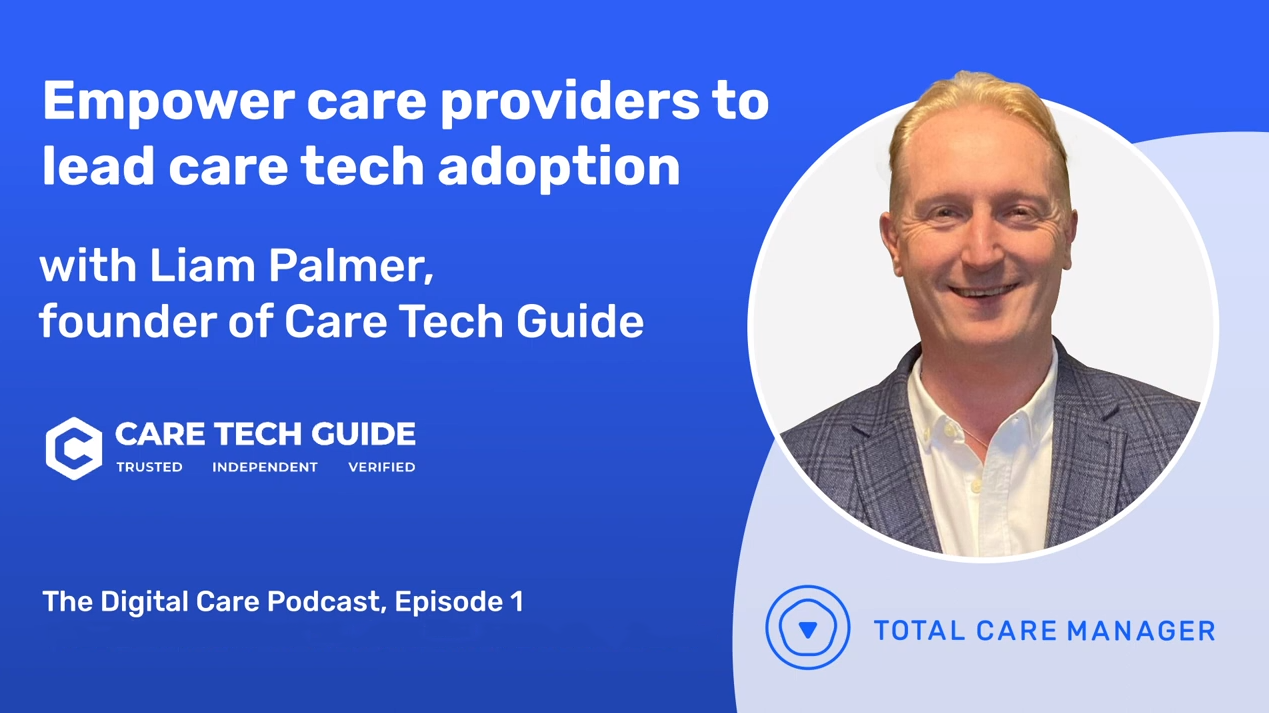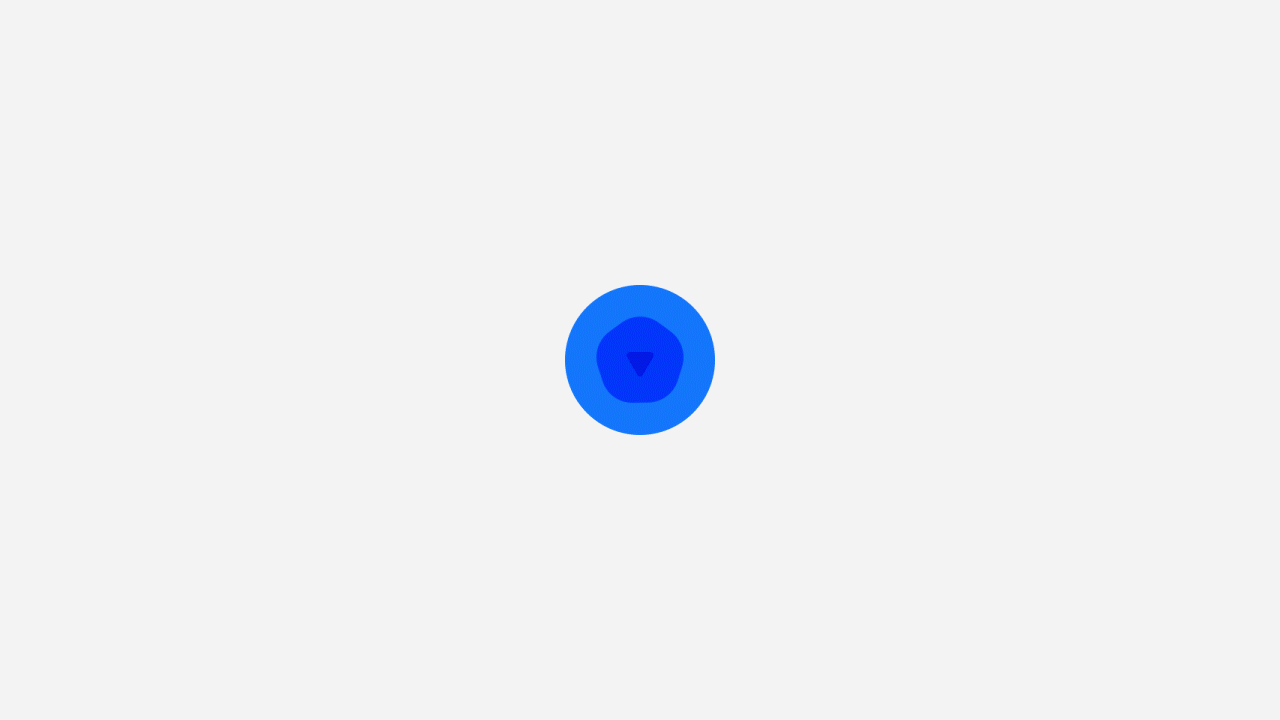
The last 24 months has seen a rapid acceleration in care tech adoption in the UK. With the help of government funding, most care providers have implemented solutions from the Assured Suppliers List for Digital Social Care Records. This is now helping most care teams to move off paper notes for everyday care logging.
This is, however, just the tip of the iceberg. New solutions are rapidly coming to market, including specialised care tools – for children, adults, or specific medical or behavioural needs – as well as business management modules for compliance, rostering and more.
This opens up many new possibilities for care providers, but has also increased complexity, in the need to differentiate between competing solutions, and to predict the impact of the new technology on the businesses.
To help care providers navigate this increasingly complex landscape, the Care Tech Guide launched in October 2023 as the UK’s first, specialised marketplace for care solutions. For the first episode of the Digital Care Podcast, we spoke to Care Tech Guide Founder Liam Palmer.
Liam has spent over 12 years in care, working as a CQC registered manager & area manager across care homes, private hospitals and retirement villages.
Interestingly, however, his prior experience was in the very different world of logistics and customer service, for the likes of Amazon and Asos. Liam describes himself as always having been…
“…very interested in behaviours, processes, how things fit together to create outcomes.”
With this dual perspective, Liam founded the Care Tech Guide to answer the need he faced as a care professional: to be able to research technology from an informed position, and with a realistic expectation of outcomes for the care business.
You can listen to the full conversation with Liam here, or read on, for an article based on our discussion.
We discussed…
- the increasing sophistication of care tech, which in turn, places greater demands on care providers to understand the available technology
- collaboration between care providers and technology vendors – and how better understanding from both sides of the market can lead to more effective tech implementations in care.
Care tech: an increasingly diverse and specialised market
Until recently, the major push in the care industry had been towards ‘doings things digitally’ – i.e., helping care providers move away from paper, onto digital care logging.
This remains a priority, not least because it has the potential to enable higher-quality care delivery, and improve safety for service users and patients. Liam recounted an example from earlier in his career which illustrates the importance of care teams collaborating around digitalised patient records – and which will be familiar to many care professionals.
Around 2019, Liam was working at an 80-bed care home, which had no digital care monitoring solution in place.
“A resident who lived opposite my office had a dramatic loss in weight, about half a stone over a couple of weeks. What happened was, the staff team missed it because the regular staff were on leave… I went over to see this lady and I noticed she wasn’t eating her meals. So there was a medical dynamic there.
The point was, she’d lost that weight over a week or so and I didn’t know about it.”
Today, most care providers are now sold on the importance of digital care logging for avoiding eventualities such as these.
The widespread adoption of electronic health record (EHR) solutions, however, has opened a kind of ‘Pandora’s box’ of care tech.
On the care provider side: customers have quickly discovered the limitations of their first-generation software, as well as possibilities for software to improve efficiencies across other areas of their business.
On the vendor side: increased adoption has enabled greater investment and innovation, allowing a larger number of vendors to bring increasingly specialised solutions to market.
Liam explains that the market is mixed in terms of understanding and appreciation of what these systems can do. His team at Care Tech Guide has identified…
“…2-3 different profiles of people who want to know more about tech.
You’ve got your director, who’s already aware of the existence of the main stuff such as the acoustic monitoring, eMARS, care monitoring, etc.
And then you’ve got people that know that tech is a hot topic but aren’t sure where to start.
Should they start with care planning, rostering, or eMARS, should they go for an all-in-one – what are the pros and cons?”
As we discussed in Total Care Manager’s previous blog, businesses in every industry are gradually migrating away from bundled (i.e., all-in-one) solutions, towards technology platforms assembled from multiple, best-in-class components.
The care industry is now at the beginning of that curve, with different care providers making choices based on their differing specialisms and challenges. And as Liam explains, care providers are to addressing far wider range of business priorities with modern tools, in addition to quality of care provision.
“With the particular cost pressures on the care sector – which are a combination of energy usage, workforce costs, etc. – I think intelligently-applied technology can really contribute to solving a lot of these problems.”
One incredibly valuable and welcome resource, for helping care providers on this journey, is the Assured Suppliers List for Digital Social Care Records. It provides assurance that the technology fulfils certain functions and meets certain standards, and allows the care provider to approach the purchase of an EHR solution with greater confidence.
The List does not, however, provide the breadth or depth of knowledge which many care providers need in order to properly evaluate and compare solutions. Nor does it address their growing need for technological improvement beyond the EHR.
Faced by such complexity, it is important for technology buyers in care to increase their technical literacy, and become proficient in critiquing the ability of different solutions to answer their needs.
Care providers & solution vendors must collaborate around technology adoption
Liam reflects on his early experiences, of technology buying in care, as having been frustrating and difficult. Around 2019, Liam says…
“The quality of marketing of these suppliers wasn’t brilliant, in terms of them speaking the language of care providers… it was almost impossible to find what you wanted using Google.
They used different terms for the same thing, and it was very difficult to differentiate between the suppliers.”
This problem has arguably only compounded, as care providers move from first- to second-generation technology platforms, and seek out more specialised solutions. A care provider’s initial foray into digital transformation is not an “end point”, in Liam’s words, since once that first step is taken, “you’ll know what your gaps are.”
Those “gaps” are now being filled by an increasingly diverse market for care solutions. Liam says he’s identified 10-15 core categories of tech, including…
- sensors & falls monitoring
- quality & compliance [platforms] such as Radar
- site maintenance
- finance
- recruitment tools including applicant tracking systems (ATS)
…with “layers and layers” of subcategories, depending on the care provider’s unique requirements.
And whilst the proliferation of solutions makes things more complicated for technology buyers, it also shifts the balance of power in their favour, as vendors find themselves in an increasingly competitive market.
That ultimately points towards a shift in the solution vendor’s commercial strategy: away from direct selling, and towards answering customers’ research needs.
“Direct selling is not a particularly objective process to find things… What the tech supplier community needs to get ready for is an empowering of the care providers to choose and find tech…
That’s a sight mental change, because there’s quite a lot of marketing activity which, in my simple view, is push marketing dressed as research. And I think care providers are pretty savvy. So let’s be comfortable with care providers getting informed, and being in charge of their own search.”
The Care Tech Guide is a valuable player in this shift, providing a forum where vendors and buyers can network based on mutual fit, and where vendors can demonstrate exactly how they align with care providers’ priorities.
In that context, Liam’s advice to technology vendors is to spend less time talking about their features, and more time talking to care providers around their pain points. Care providers, he explains, will welcome insight on…
“…how to create a tailored strategy for their service. They’re the people best-placed to make that decision – but they need to be upskilled around what’s available. That’s the part we hope to do.”
Certainly, marketplaces for B2B tech have proven valuable in every industry, with AWS Marketplace, Capterra and more answering the need for general business software.
The UK’s care industry, however, is characterised by a large number of small businesses, whose size stands in contrast to the very significant responsibilities they bear for peoples’ welfare and health outcomes.
This makes it crucial for people on both sides of the market to improve mutual understanding, and to collaborate more effectively around greater efficiency in business, and better delivery of care.
Care Tech Guide – the UK’s only dedicated marketplace for care solutions
Care Tech Guide is a free resource for UK-regulated care agencies and care homes. Beyond being a simple directory, it helps to guide care providers towards appropriate solutions based on their needs and challenges – ultimately empowering care providers to take control of their own technology.
Visit Care Tech Guide to find out more.
About Total Care Manager
Total Care Manager is the best-in-class EHR app for complex care and more.
As well as being a standalone solution for care logging and care management, our API-first solution can easily slot into any care provider’s existing technology stack. That allows care providers to extend the capabilities of their technology platform, without the need for a wholesale replacement of their existing tools.
Learn more about Total Care Manager here.




